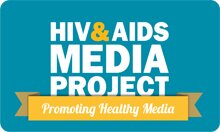Pre-exposure prophylaxis (PrEP)
Pre-exposure prophylaxis is any medical intervention taken or applied before (pre-) potential HIV exposure in order to prevent a person from becoming HIV-positive.
PrEP is a relatively new concept which is not widely available to the public because different forms are still in the testing stages.
 PrEP should not be confused with post-exposure prophylaxis (PEP).
PrEP should not be confused with post-exposure prophylaxis (PEP).
The idea behind PrEP is to take a daily ARV as a precaution to prevent HIV infection in the event that a person might be exposed to the virus. PEP is when a short course of ARVs is given to an HIV-negative person immediately following an incident (for example sexual assault or a needle stick injury) where they might have been exposed to HIV.
 PrEP Research
PrEP Research
Different forms of PrEP must be tested before they can be made available to the public.
There are various recently published and ongoing landmark studies involving microbicides and ARVs taken in tablet form.
Microbicide trials
Microbicides are compounds that are applied inside the vagina or rectum before sex to form a barrier against HIV. Although many microbicide trials have been conducted, few have been succesful and many had to be discontinued following doubts around their efficacy.
The most successful trial to date involves the testing of a microbicide containing the ARV tenofovir. The second phase of the trial (CAPRISA 004) was conducted in SA and results relvealed in 2010 showed that the tenofovir microbicide provided 39% protection from HIV. Surprisingly it was also 51% effective in preventing gential herpes.
The third phase of the trial (FACTS 001) was scheduled to begin in mid 2011.
ARVs:Treatment as prevention
Multiple studies have shown that ARVs taken by HIV-negative people can prevent HIV infection, this is referred to as "treatment as prevention".
IPrEX
The iPrEX study (2010) was an international phase 3 clinical trial which involved HIV-negative MSM (some who identify as heterosexual and some who identify as gay) and HIV-negative female to male (F2M) transgender people. The study showed that when ARVs (tenofovir and emtricitabine - TDF/FTC) are taken as a single pill (Truvada) it provides 44% protection form HIV infection.
TDF2
The TDF 2 study (2011) involved HIV serodiscordant couples (one partner HIV+ and one HIV-) and found that the same combination of ARVs used in the iPrEX study was even more effective (77%) at preventing HIV transmission among heterosexual couples. The study was conducted in Botswana.
Partners PrEP
The ongoing Partners PrEP study involves HIV serodiscordant couples in Kenya and Uganda. Participants are divided into three groups, two experimental groups (given the treatment) and one control group (given a placebo).
One group will take the Truvada (TDF/FTC) combination pill tested in previous studies, the second experimental group will be given a pill which contains tenofovir (TDF) only and the third group (control group) will receive the placebo.
This study originally aimed to test which of the two medications is more effective in terms of HIV prevention, however it was found that the HIV preventative effect of the study is significant and so the control group has been discontiued and its participants have been offered TDF or the TDF/FTC combination.
Results are expected in 2010/2013.
HPTN 052
The HPTN 052 trial (2011) trial showed that starting treatment early reduces an HIV-postive person’s chance of infecting their HIV-ngative partner by 96%.
The study also showed that early initiation of ART benefits the overall health of the HIV-postive individual.
The South African news media has often published articles slamming various clinical trials because of misinterpretation and a lack of knowledge around the facts and ethics of research. Ensure you read and refer to the orginal research report when reporting on clinical trials.
Last updated: 21 September 2011






